Cleavage-stage versus blastocyst-stage embryo transfer in assisted reproductive technology
- PMID: 35588094
- PMCID: PMC9119424
- DOI: 10.1002/14651858.CD002118.pub6
Cleavage-stage versus blastocyst-stage embryo transfer in assisted reproductive technology
Abstract
Background: Advances in embryo culture media have led to a shift in in vitro fertilisation (IVF) practice from cleavage-stage embryo transfer to blastocyst-stage embryo transfer. The rationale for blastocyst-stage transfer is to improve both uterine and embryonic synchronicity and enable self selection of viable embryos, thus resulting in better live birth rates.
Objectives: To determine whether blastocyst-stage (day 5 to 6) embryo transfer improves the live birth rate (LBR) per fresh transfer, and other associated outcomes, compared with cleavage-stage (day 2 to 3) embryo transfer.
Search methods: We searched the Cochrane Gynaecology and Fertility Group Specialised Register of controlled trials, CENTRAL, MEDLINE, Embase, PsycINFO, and CINAHL, from inception to October 2021. We also searched registers of ongoing trials and the reference lists of studies retrieved.
Selection criteria: We included randomised controlled trials (RCTs) which compared the effectiveness of IVF with blastocyst-stage embryo transfer versus IVF with cleavage-stage embryo transfer.
Data collection and analysis: We used standard methodological procedures recommended by Cochrane. Our primary outcomes were LBR per fresh transfer and cumulative clinical pregnancy rates (cCPR). Secondary outcomes were clinical pregnancy rate (CPR), multiple pregnancy, high-order multiple pregnancy, miscarriage (all following first embryo transfer), failure to transfer embryos, and whether supernumerary embryos were frozen for transfer at a later date (frozen-thawed embryo transfer). We assessed the overall quality of the evidence for the main comparisons using GRADE methods.
Main results: We included 32 RCTs (5821 couples or women). The live birth rate following fresh transfer was higher in the blastocyst-stage transfer group (odds ratio (OR) 1.27, 95% confidence interval (CI) 1.06 to 1.51; I2 = 53%; 15 studies, 2219 women; low-quality evidence). This suggests that if 31% of women achieve live birth after fresh cleavage-stage transfer, between 32% and 41% would do so after fresh blastocyst-stage transfer. We are uncertain whether blastocyst-stage transfer improves the cCPR. A post hoc analysis showed that vitrification could increase the cCPR. This is an interesting finding that warrants further investigation when more studies using vitrification are published. The CPR was also higher in the blastocyst-stage transfer group, following fresh transfer (OR 1.25, 95% CI 1.12 to 1.39; I2 = 51%; 32 studies, 5821 women; moderate-quality evidence). This suggests that if 39% of women achieve a clinical pregnancy after fresh cleavage-stage transfer, between 42% and 47% will probably do so after fresh blastocyst-stage transfer. We are uncertain whether blastocyst-stage transfer increases multiple pregnancy (OR 1.05, 95% CI 0.83 to 1.33; I2 = 30%; 19 studies, 3019 women; low-quality evidence) or miscarriage rates (OR 1.12, 95% CI 0.90 to 1.38; I2 = 24%; 22 studies, 4208 women; low-quality evidence). This suggests that if 9% of women have a multiple pregnancy after fresh cleavage-stage transfer, between 8% and 12% would do so after fresh blastocyst-stage transfer. However, a sensitivity analysis restricted only to studies with low or 'some concerns' for risk of bias, in the subgroup of equal number of embryos transferred, showed that blastocyst transfer probably increases the multiple pregnancy rate. Embryo freezing rates (when there are frozen supernumerary embryos for transfer at a later date) were lower in the blastocyst-stage transfer group (OR 0.48, 95% CI 0.40 to 0.57; I2 = 84%; 14 studies, 2292 women; low-quality evidence). This suggests that if 60% of women have embryos frozen after cleavage-stage transfer, between 37% and 46% would do so after blastocyst-stage transfer. Failure to transfer any embryos was higher in the blastocyst transfer group (OR 2.50, 95% CI 1.76 to 3.55; I2 = 36%; 17 studies, 2577 women; moderate-quality evidence). This suggests that if 1% of women have no embryos transferred in planned fresh cleavage-stage transfer, between 2% and 4% probably have no embryos transferred in planned fresh blastocyst-stage transfer. The evidence was of low quality for most outcomes. The main limitations were serious imprecision and serious risk of bias, associated with failure to describe acceptable methods of randomisation.
Authors' conclusions: There is low-quality evidence for live birth and moderate-quality evidence for clinical pregnancy that fresh blastocyst-stage transfer is associated with higher rates of both than fresh cleavage-stage transfer. We are uncertain whether blastocyst-stage transfer improves the cCPR derived from fresh and frozen-thawed cycles following a single oocyte retrieval. Although there is a benefit favouring blastocyst-stage transfer in fresh cycles, more evidence is needed to know whether the stage of transfer impacts on cumulative live birth and pregnancy rates. Future RCTs should report rates of live birth, cumulative live birth, and miscarriage. They should also evaluate women with a poor prognosis to enable those undergoing assisted reproductive technology (ART) and service providers to make well-informed decisions on the best treatment option available.
Copyright © 2022 The Cochrane Collaboration. Published by John Wiley & Sons, Ltd.
Conflict of interest statement
Demián Glujovsky is part of medical staff of a fertility clinic and undertakes private practice within those premises.
Andrea Quinteiro Retamar is the egg donor coordinator of a fertility clinic and undertakes private practice within those premises.
Simone Cornelisse is the lead author of excluded study Cornelisse 2018 and took no part in assessing it for this review.
Cristian Alvarez Sedo, Agustín Ciapponi, and Deborah Blake have no conflicts of interest to declare.
Figures
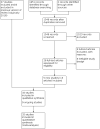

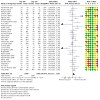
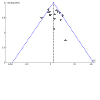
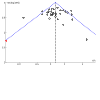
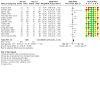
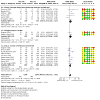
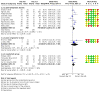
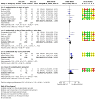
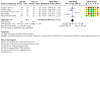
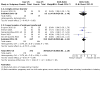
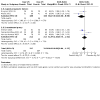
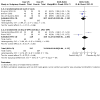
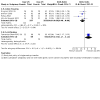
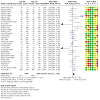
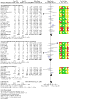
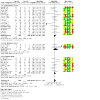



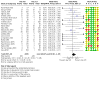
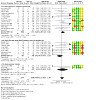
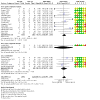
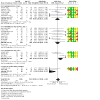
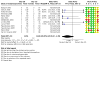

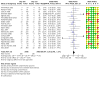
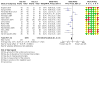
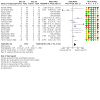
Update of
-
Cleavage stage versus blastocyst stage embryo transfer in assisted reproductive technology.Cochrane Database Syst Rev. 2016 Jun 30;(6):CD002118. doi: 10.1002/14651858.CD002118.pub5. Cochrane Database Syst Rev. 2016. Update in: Cochrane Database Syst Rev. 2022 May 19;5:CD002118. doi: 10.1002/14651858.CD002118.pub6. PMID: 27357126 Updated.
References
References to studies included in this review
Aziminekoo 2015 {published data only}
-
- Aziminekoo E, Mohseni Salehi MS, Kalantari V, Shahrokh Tehraninejad E, Haghollahi F, Hossein Rashidi B, et al. Pregnancy outcome after blastocyst stage transfer comparing to early cleavage stage embryo transfer. Gynecological Endocrinology 2015;31(11):880-4. - PubMed
Brugnon 2010 {published data only}
-
- Brugnon F, Bouraoui Z, Ouchchane L, Gremeau AS, Peikrishvili R, Pouly JL, et al. Cumulative pregnancy rates after single cleavage-stage versus blastocyst-stage embryo transfer: a randomized and prospective study. Human Reproduction 2010;25:i60-1.
Bungum 2003 {published data only}
-
- Bungum M, Bungum L, Humaidan P, Yding Andersen C. Day 3 versus day 5 embryo transfer: a prospective randomized study. Reproductive Biomedicine Online 2003;7(1):98-104. - PubMed
Coskun 2000 {published data only}
-
- Coskun S, Hollanders J, Al-Hassan S, Al-Sufyan H, Al-Mayman H, Jaroudi K. Day 5 versus day 3 embryo transfer: a controlled randomized trial. Human Reproduction 2000;15(9):1947-52. - PubMed
Devreker 2000 {published data only}
-
- Devreker F, Delbaere A, Emiliani S, Van den Bergh M, Biramane J, Englert Y. Prospective and randomized comparison between transfer on day 2 or day 5 for patients with more than four IVF attempts. Human Reproduction 2000;15(Supp 1):151-2.
Elgindy 2011 {published data only}
-
- Elgindy EA, Abou-Setta AM, Mostafa MI. Blastocyst-stage versus cleavage-stage embryo transfer in women with high oestradiol concentrations: randomized controlled trial. Reproductive Biomedicine Online 2011;23(6):789-98. [PMID: ] - PubMed
Emiliani 2003 {published data only}
-
- Emiliani S, Delbaere A, Vannin A, Biramane J, Verdoodt M, Englert Y, et al. Similar delivery rates in a selected group of patients, for day 2 and day 5 embryos both cultured in sequential medium: a randomized study. Human Reproduction 2003;18(10):2145-50. - PubMed
Fernandez‐Shaw 2015 {published data only}
-
- Fernandez-Shaw S, Cercas R, Brana C, Villas C, Pons I. Ongoing and cumulative pregnancy rate after cleavage-stage versus blastocyst-stage embryo transfer using vitrification for cryopreservation: impact of age on the results. Journal of Assisted Reproduction and Genetics 2015;32(2):177-84. - PMC - PubMed
-
- Fernandez-Shaw S. Unpublished data including live birth and cumulative live birth rates [personal communication]. Email to: Demián Glujovsky 6 May 2016.
Fisch 2007 {published data only}
-
- Fisch JD, Adamowicz M, Hackworth J, Ginsburg M, Keskintepe L, Sher G. Single embryo transfer (SET) day 3 vs day 5 based on graduated embryo score (GES) and soluble human leukocyte antigen-G (sHLA-G): preliminary results of a prospective, randomized controlled trial. Fertility and Sterility 2007;88(Suppl 1):332-3, abstract no. 679.
Frattarelli 2003 {published data only}
-
- Frattarelli JL, Leondires MP, McKeeby JL, Miller BT, Segars JH. Blastocyst transfer decreases multiple pregnancy rates in in vitro fertilization cycles: a randomized controlled trial. Fertility and Sterility 2003;79(1):228-30. - PubMed
Gaafar 2015 {published data only}
-
- Gaafar SH, El Fourtia I, El Tawil S, El Guiziry D, El Maghraby H. Blastocyst versus day 2-3 transfer in ICSI cycles for male factor infertility: a multicenter randomized controlled trial. Human Reproduction 2015;30(Suppl 1):i217, abstract no. P-223.
Gardner 1998a {published data only}
-
- Gardner DK, Schoolcraft WB, Wagley L, Schlenker T, Stevens J, Hesla J. A prospective randomized trial of blastocyst culture and transfer in in-vitro fertilization. Human Reproduction 1998;13(12):3434-40. - PubMed
Hatirnaz 2017 {published data only}
Hreinsson 2004 {published data only}
-
- Hreinsson J, Rosenlund B, Fridstrom M, Ek I, Levkov L, Sjoblom P, et al. Embryo transfer is equally effective at cleavage stage and blastocyst stage: a randomized prospective study. European Journal of Obstetrics, Gynecology and Reproductive Biology 2004;117:194-200. - PubMed
Karaki 2002 {published data only}
-
- Karaki RZ, Samarraie SS, Younis NA, Lahloub TM, Ibrahim MH. Blastocyst culture and transfer: a step toward improved in vitro fertilization outcome. Fertility and Sterility 2002;77(1):114-8. - PubMed
Kaser 2017 {published data only}
-
- Kaser DJ, Bormann CL, Missmer SA, Farland LV, Ginsburg ES, Racowsky C. A pilot randomized controlled trial of Day 3 single embryo transfer with adjunctive time-lapse selection versus Day 5 single embryo transfer with or without adjunctive time-lapse selection. Human Reproduction 2017;32(8):1598-1603. - PubMed
-
- Kaser DJ, Bormann CL, Missmer SA, Farland LV, Ginsburg ES, Racowsky C. Eeva™ pregnancy pilot study: a randomized controlled trial of single embryo transfer (SET) on day 3 or day 5 with or without time-lapse imaging (TLI) selection. Fertility and Sterility 2016;106(3 (suppl 1)):e312.
Kaur 2014 {published data only}
-
- Kaur P, Swarankar ML, Maheshwari M, Acharya V. A comparative study between cleavage stage embryo transfer at day 3 and blastocyst stage transfer at day 5 in in-vitro fertilization/intra-cytoplasmic sperm injection on clinical pregnancy rates. Journal of Human Reproductive Sciences 2014;7(3):194-7. - PMC - PubMed
-
- Kaur P, Swarankar ML, Maheshwari M, Sharma S. Implantation rates after two and five days of embryo culture: a comparative study. JK Science 2013;15(4):185-8.
Kolibianakis 2004 {published data only}
-
- Kolibianakis EM, Zilopoulos K, Verpoest W, Camus M, Joris H, Van Steirteghem AC, et al. Should we advise patients undergoing in-vitro fertilization to start a cycle leading to a day 3 or day 5 transfer? Human Reproduction 2004;19:2550-4. - PubMed
Levi‐Setti 2018 {published data only}
Levitas 2004 {published data only}
-
- Levitas E, Lunenfeld E, Hackmon Ram R, Sonin Y, Har Vardi I, Potashnik G. A prospective, randomized study comparing blastocyst stage versus 48-72 hr embryo transfer in women failed to conceive three or more in-vitro fertilization treatment cycles. Fertility and Sterility 2001;76(3 (suppl 1)):S118. - PubMed
-
- Levitas E, Lunenfeld E, Har-Vardi I, Albotiano S, Sonin Y, Hackmon-Ram R, et al. Blastocyst-stage embryo transfer in patients who failed to conceive in three or more day 2-3 embryo transfer cycles: a prospective, randomized study. Fertility and Sterility 2004;81(3):567-71. - PubMed
Levron 2002 {published data only}
-
- Levron J, Shulman A, Bider D, Seidman D, Levin T, Dor J. A prospective randomized study comparing day 3 with blastocyst-stage embryo transfer. Fertility and Sterility 2002;77:1300-1. - PubMed
Livingstone 2002 {published and unpublished data}
-
- Livingstone M, Bowman M. Single blastocyst transfer: a prospective randomised trial. In: 17th World Congress on Fertility and Sterility; 2001 Nov 25-30; Melbourne, Australia. Royal (NJ): International Federation of Fertility Societies:218.
Motta 1998 {published data only}
-
- Motta LA, Alegretti JR, Pico M, Sousa JW, Baracat EC, Serafini P. Blastocyst vs. cleaving embryo transfer: a prospective randomized trial. Fertility and Sterility 1998;70(Suppl 1):17.
Pantos 2004 {published data only}
-
- Pantos K, Makrakis E, Stavrou D, Karantzis P, Vaxevanoglou T, Tzigounis V. Comparison of embryo transfer on day 2, day 3, and day 6: a prospective randomized study. Fertility and Sterility 2004;81(2):454-5. - PubMed
Papanikolaou 2005 {published data only}
-
- Papanikolaou EG, D'haeseleer E, Verheycn G, Van de Velde H, Camus M, Van Steirteghem A, et al. Live birth rate is significantly higher after blastocyst transfer than after cleavage-stage transfer when at least four embryos are available on day 3 of culture. A randomized prospective study. Human Reproduction 2005;20(11):3198-203. - PubMed
-
- Papanikolaou EG Sr, Verheyen G, Camus M, Van Steirteghem A, Devroey P, Tournaye H. Ongoing pregnancy rate is significantly higher with day 5 embryo transfer than after day 3 embryo transfer, when more than three embryos are available on the third day of embryo culture. Fertility and Sterility 2005;84(Suppl 1):s51.
Papanikolaou 2006 {published data only}
-
- Papanikolaou EG, Camus M, Kolibianakis EM, Turki H, Van Landuyt L, Van Steirteghem A, et al. Single embryo transfer: comparison of cleavage stage embryo transfer with blastocyst stage embryo transfer. A randomized prospective study. Human Reproduction 2005;20(suppl_1):i144-5.
Rienzi 2002 {published data only}
-
- Rienzi l, Ubaldi F, Lacobelli M, Ferrero S, Minasi MG, Martinez F, et al. Day 3 embryo transfer with combined evaluation at the pronuclear and cleavage stages compares favourably with day 5 blastocyst transfer. Human Reproduction 2002;17:1852-5. - PubMed
Schillaci 2002 {published data only}
-
- Schillaci R, Castelli A, Vassiliadis A, Venezia R, Sciacca GM, Perino A, et al. Blastocyst stage versus day 2 embryo transfer in IVF cycles. Human Reproduction 2002;17(Supp 1):143.
Singh 2017 {published data only}
-
- Singh R, Singh M, Jindal A, Jindal P. A randomised controlled trial comparing the cost-effectiveness of blastocyst (Day 5/6) versus cleavage stage (Day 3) embryo transfers in IVF-ICSI cycles in developing countries. Human Reproduction 2017;32 Suppl 1:i483-4.
-
- Singh R, Singh M. A prospective randomised controlled study comparing the cost effectiveness of IVF-ICSI treatment: cleavage stage (day 3) embryo transfer versus extended culture (day 5/6 blastocyst) transfer. Fertility and Sterility 2013;100(3):S289.
Ten 2011 {published data only}
-
- Ten J, Carracedo MA, Guerrero J, Rodriguez-Arnedo A, Llacer J, Bernabeu R. Day 3 or day 5 embryo transfer? A randomized prospective study. Human Reproduction 2011;26(Suppl 1):i165 Abstract no: P‐109.
Van der Auwera 2002 {published data only}
-
- Van der Auwera I, Debrock S, Spiessens C, Afschrift H, Bakelants E, Meuleman C, et al. A prospective randomized study: day 2 versus day 5 embryo transfer. Human Reproduction 2002;17(6):1507-12. - PubMed
Yang 2018 {published data only}
-
- ChiCTR-ICR-15006600. Using time-lapse technology for single embryo transfer: a prospective randomized controlled study. www.chictr.org.cn/hvshowproject.aspx?id=11293 (first posted 16 June 2015).
-
- Yang L, Cai S, Zhang S, Kong X, Gu Y, Lu C, et al. Single embryo transfer by Day 3 time-lapse selection versus Day 5 conventional morphological selection: a randomized, open-label, non-inferiority trial. Human Reproduction 2018;33(5):869-76. - PubMed
-
- Yang L, Kong X, Zhang S, Dai J, Gong F, Lu G, Lin G. Single embryo transfer on cleavage-stage (D3) using timelapse selection versus on blastocyst(D5) using traditional morphological selection in patients with good prognosis: a prospective randomized controlled trial. Human Reproduction 2017;32 Suppl 1:i102-3.
References to studies excluded from this review
Bungum 2002 {published data only}
-
- Bungum L, Bungum M, Humaiden P. Blastocyst stage transfer is not better than embryo transfer on day 3: a prospective randomized study. Human Reproduction 2002;17(Suppl 1):53.
Cornelisse 2018 {published data only}
-
- Cornelisse S, Fleischer K, Repping S, Mastenbroek S. An informed decision between cleavage-stage and blastocyst-stage transfer in IVF requires data on the transfers of frozen-thawed embryos. Human Reproduction 2018;33:1370. - PubMed
Green 2016 {published data only}
-
- Green KA, Patounakis G, DeCherney A, Graham J, Tucker MJ, Widra EA, et al. Day 3 embryo transfer (ET) versus pushing to day 5 in patients with few embryos. Fertility and Sterility 2016;106:e165.
Guerin 1991 {published data only}
-
- Guerin JF, Mathieu C, Pinatel MC, Reginier-Vigouroux G, Lornage J, Boulieu D, et al. Coculture of human embryos with monkey kidney epithelial cells: clinical data concerning transfers delayed at D3 and D5. Contraception, Fertilite, Sexualite 1991;19(7-8):635-8.
Holden 2017 {published data only}
-
- Holden EC, Kashani BN, Morelli S, Alderson D, Jindal SK, McGovern PG. Perinatal outcomes are similar in blastocyst compared to cleavage stage frozen-thawed embryo transfers: a SARTCORS study. Fertility and Sterility 2017;108:e38. - PubMed
Levron 2001 {published data only}
-
- Levron J, Bider D, Shulman A, Rabinovichi Y, Seidman D, Dor J. A randomized prospective study on blastocyst versus day 2-3 embryo transfer. Fertility and Sterility 2001;Suppl 1(3):4.
Loup 2009 {published data only}
-
- Loup V, Anahory T, Reyftmann L, Dechaud H, Hedon B, Hamamah S. Efficiency of consecutive embryos transfer on day 3 and day 5 than replacement of 2 embryos on day 3 for women over 37 years: prospective study. Molecular Human Reproduction 2009;24:i139.
Menezo 1992 {published data only}
-
- Menezo Y, Hazout A, Dumont M, Herbaut N, Nicollet B. Coculture of embryos on Vero cells and transfer of blastocysts in humans. Human Reproduction 1992;7(Suppl 1):101-6. - PubMed
Utsonomiya 2004 {published data only}
-
- Utsunomiya T, Ito H, Nagaki M, Sato J. A prospective, randomised study: day 3 versus hatching blastocyst stage. Human Reproduction 2004;19:1598-1603. - PubMed
Zech 2007 {published data only}
-
- Vanderzwalmen P, Lejeune B, Puissant F, Vanderzwalmen S, Zech H, Zintz M, et al. A prospective evaluation of the optimal time for selecting a single embryo for transfer: day 3 vs. day 5. Human Reproduction 2006;Suppl:i80-1. - PubMed
-
- Zech NH, Lejeune B, Puissant F, Vanderzwalmen S, Zech H, Vanderzwalmen P. Prospective evaluation of the optimal time for selecting a single embryo for transfer: day 3 versus day 5. Fertility and Sterility 2007;88(1):244-6. - PubMed
References to studies awaiting assessment
Clua Obrado 2020 {published data only}
-
- Clua Obrado E, Rodriguez I, Arroyo G, Martinez F, Latre L, Coroleu B, et al. Cleavage stage embryo transfer impairs cumulative live birth rates and time to livebirth as compared to blastocyst transfer in oocyte recipients. A randomized controlled trial. Human Reproduction 2020;35(Suppl 1):i2-i3.
References to ongoing studies
ChiCTR‐ICR‐15006184 {published data only}
-
- ChiCTR-ICR-15006184. Cumulative live birth rates after cleavage-stage versus blastocyst-stage embryo transfer: a multicenter, prospective, randomized controlled trial. www.chictr.org.cn/showprojen.aspx?proj=10698 (first received 29 March 2015).
Cornelisse 2021 {published data only}
-
- Cornelisse S, Ramos L, Arends B, Brink-van der Vlugt JJ, Bruin JP, et al. Comparing the cumulative live birth rate of cleavage-stage versus blastocyst-stage embryo transfers between IVF cycles: a study protocol for a multicentre randomised controlled superiority trial (the ToF trial). BMJ Open 2021;11:e042395. - PMC - PubMed
-
- NTR7034. ToF-studie Embryo transfer, day Three Or day Five, in good prognosis IVF cycles. www.who.int/trialsearch/Trial2.aspx?TrialID=NTR7034 (first received 19 February 2018).
ISRCTN48090543 {published data only}
-
- ISRCTN48090543. Trial comparing blastocyst transfer with cleavage stage transfer in women with increased maternal age [Blastocyst stage vs cleavage stage transfer in women with increased maternal age: a prospective randomised controlled trial]. trialsearch.who.int/?TrialID=ISRCTN48090543 (first received 28 December 2011).
NCT01107002 {published data only}
-
- NCT01107002. Comparison of 5 day embryo transfer with 2-3 day transfer in patients with previous in vitro fertilization failure. clinicaltrials.gov/ct2/show/NCT01107002 (first received 20 April 2010).
NCT02639000 {published data only}
-
- NCT02639000. Effects of blastocyst stage compared with cleavage stage embryo transfer in women below 39 years. clinicaltrials.gov/show/NCT02639000 (first received 23 December 2015).
NCT04210414 {published data only}
-
- NCT04210414. Cleave-stage transfer on day 3 versus day 5 transfer when only one embryo available (Cleave-blast). clinicaltrials.gov/show/NCT04210414 (first received 24 December 2019).
Neuhausser 2020 {published data only}
PACTR201402000773124 {published data only}
-
- PACTR201402000773124. Blastocyst versus day 2 transfer in low responders. www.who.int/trialsearch/Trial2.aspx?TrialID=PACTR201402000773124 (first received 18 February 2014).
PACTR201709002592834 {published data only}
-
- PACTR201709002592834. A randomized controlled trial of pregnancy outcome of sequential versus day 3 and day 5 embryo transfer in cases with recurrent implantation failure. www.who.int/trialsearch/Trial2.aspx?TrialID=PACTR201709002592834 (first received 7 September 2019).
Additional references
Alviggi 2018
-
- Alviggi C, Conforti A, Carbone IF, Borrelli R, Placido G, Guerriero S. Influence of cryopreservation on perinatal outcome after blastocyst- vs cleavage-stage embryo transfer: systematic review and meta-analysis. Ultrasound in Obstetrics and Gynecology 2018;51(1):54-63. - PubMed
Armstrong 2019
Baart 2006
-
- Baart EB, Martini E, Van den Berg I, Macklon NS, Galjaard RJ, Fauser BC, et al. Preimplantation genetic screening reveals a high incidence of aneuploidy and mosaicism in embryos from young women undergoing IVF. Human Reproduction 2006;21(1):223-33. - PubMed
Begg 1996
-
- Begg C, Cho M, Eastwood S, Horton R, Moher D, Olkin I, et al. Improving the quality of reporting of randomized controlled trials: the CONSORT statement. JAMA 1996;276:637-9. - PubMed
Behr 2000
Borg 2000
-
- Borg K, Moller A, Hammar M, Blake D, Hillensjo T, Wikland M. Blastocyst culture - more or less stressful for patients? In: European Society of Human Reproduction and Enbryology (ESHRE). Bologna, 2000:48.
Braude 1998
-
- Braude P, Bolton V, Moore S. Human gene expression first occurs between the four and eight-cell stages of preimplantation development. Nature 1988;332:459-61. - PubMed
Busnelli 2019
-
- Busnelli A, Dallagiovanna C, Reschini M, Paffoni A, Fedele L, Somigliana E. Risk factors for monozygotic twinning after in vitro fertilization: a systematic review and meta-analysis. Fertility and Sterility 2019;111(2):302-17. - PubMed
Cohen 1990
-
- Cohen J, Elsner C, Kort HM. Impairment of hatching process following IVF in the human and improvement of implantation by assisted hatching using micromanipulation. Human Reproduction 1990;5:7-13. - PubMed
Cornelisse 2018
-
- Cornelisse S, Fleischer K, Repping S, Mastenbroek S. An informed decision between cleavage-stage and blastocyst-stage transfer in IVF requires data on the transfers of frozen–thawed embryos. Human Reproduction 2018;33(7):1370. - PubMed
Croxatto 1972
-
- Croxatto HB, Fuentaealba B, Diaz S, Pastene L, Tatum HJ. A simple non-surgical technique to obtain unimplanted eggs from human uteri. American Journal of Obstetrics and Gynecology 1972;112(5):662-8. - PubMed
De Felici 1982
-
- De Felici M, Siracusa G. Spontaneous hardening of the zona pellucida of mouse oocytes during in vitro culture. Gamete Research 1982;6:107-13.
De Placido 2002
-
- De Placido G, Wilding M, Strina I, Alviggi E, Alviggi C, Mollo A, et al. High outcome predictability after IVF using a combined score for zygote and embryo morphology and growth rate. Human Reproduction 2002;17(9):2402-9. - PubMed
Edgar 2012
-
- Edgar DH, Gook DA. A critical appraisal of cryopreservation (slow cooling versus vitrification) of human oocytes and embryos. Human Reproduction Update 2012;18(5):536-54. [DOI: ] [PMID: ] - PubMed
Edwards 1995
-
- Edwards RG, Brody SA. History and ethics of assisted human conception. In: Principles and Practice of Assisted Human Reproduction. Philadelphia (PA): WB Sauders, 1995:17-47.
Fanchin 2001
-
- Fanchin R. Assessing uterine receptivity in 2001: Ultrasonographic glances at the new millennium. Annals of the New York Academy of Sciences 2001/10/01;943:185-202. - PubMed
Gardner 1996
-
- Gardner DK, Lane M, Calderon I, Leeton J. Environment of the preimplantation human embryo in vivo: metabolite analysis of oviduct and uterine fluids and metabolism of cumulus cell. Fertility and Sterility 1996;65(2):349-53. - PubMed
Gardner 1998b
-
- Gardner DK, Vella P, Lane M, Wagley L, Schlenker T, Schoolcraft WB. Culture and transfer of human blastocysts increases implantation rates and reduces the need for multiple embryo transfers. Fertility and Sterility 1998;69(1):84-8. - PubMed
Gardner 2003
-
- Gardner DK, Lane M, Stevens J, Schoolcraft WB. Changing the start temperature and cooling rate in a slow-freezing protocol increases human blastocyst viability. Fertility and Sterility 2003;79:407-10. - PubMed
Gardner 2004
-
- Gardner DK, Surry E, Minjarez D, Leitz A, Stevens J, Schoolcraft WB. Single blastocyst transfer a prospective randomised trial. Fertility and Sterility 2004;81:551-5. - PubMed
Ginström 2019
-
- Ginström EE, Spangmose AL, Opdahl S, Henningsen A-K, Romundstad LB, Tiitinen A, et al. Perinatal and maternal outcome after vitrification of blastocysts: a Nordic study in singletons from the CoNARTaS group. Human Reproduction 2019;34(11):2282-9. - PubMed
GRADEpro GDT [Computer program]
-
- GRADEpro GDT. Version accessed 17 April 2020. Hamilton (ON): McMaster University (developed by Evidence Prime), 2015. Available at gradepro.org.
Griesinger 2016
-
- Greisinger G. Beware of the implantation rate. Human Reproducton 2016;31(2):249-51. - PubMed
Hamberger 2005
-
- Hamberger L, Hardarson T, Nygren KG. Avoidance of multiple pregnancy by use of single embryo transfer. Minerva Ginecologica 2005;57:15-9. - PubMed
Higgins 2019a
-
- Higgins JP, Green S, editors. Cochrane Handbook for Systematic Reviews of Interventions version 6.0 (updated July 2019). Cochrane, 2019. Available from www.training.cochrane.org/handbook.
Higgins 2019b
-
- Higgins JP, Savović J, Page MJ, Elbers RG, Sterne JA. Chapter 8: Assessing risk of bias in a randomized trial. In: Higgins JP, Thomas J, Chandler J, Cumpston M, Li T, Page MJ, et al (editors). Cochrane Handbook for Systematic Reviews of Interventions version 6.0 (updated July 2019). Cochrane, 2019. Available from www.training.cochrane.org/handbook.
Iwayama 2011
Jain 2004
Jones 1999
-
- Jones GM, Trounson AO. The benefits of extended culture. Human Reproduction 1999;14(6):1405-8. - PubMed
Jones 2008
-
- Jones GM, Cram DS, Song B, Kokkali G, Pantos K, Trounson AO. Novel strategy with potential to identify developmentally competent IVF blastocysts. Human Reproduction 2008;23(8):1748-59. - PubMed
Kamath 2020
Laverge 2001
-
- Laverge H, De Sutter P, Van der Elst J, Dhont M. A prospective, randomized study comparing day 2 and day 3 embryo transfer in human IVF. Human Reproduction 2001;16(3):476-80. - PubMed
Luna 2007
-
- Luna M, Duke M, Copperman A, Grunfeld L, Sandler B, Barritt J. Blastocyst embryo transfer is associated with a sex-ratio imbalance in favor of male offspring. Fertility and Sterility 2007;87:519-23. - PubMed
Magli 1998
Magli 2000
-
- Magli MC, Jones GM, Gras L, Gianaroli L, Korman I, Trounson A. Chromosome mosaicism in day 3 aneuploid embryos that develop to morphologically normal blastocysts in vitro. Human Reproduction 2000;15:1781-6. - PubMed
Maheshwari 2016
-
- Maheshwari A, Hamilton M, Bhattacharya S. Should we be promoting embryo transfer at blastocyst stage? Reproductive BioMedicine Online 2016;32(2):142-6. - PubMed
Marek 1999
-
- Marek D, Langley M, Gardner DK, Confer N, Doody KM, Doody KJ. Introduction of blastocyst culture and transfer for all patients in an in vitro fertilization program. Fertility and Sterility 1999;72(6):1035-40. - PubMed
Marston 1977
-
- Marston JH, Penn R, Sivelle PC. Successful autotransfer of tubal eggs in the rhesus monkey (Macaca mulatta). Journal of Reproduction and Fertility 1977;49:175-6. - PubMed
Martins 2016
-
- Martins WP, Nastri CO, Rienzi L, Van der Poel SZ, Gracia CR, Racowsky C. Obstetrical and perinatal outcomes following blastocyst transfer compared to cleavage transfer: a systematic review and meta-analysis. Human Reproduction 2016;31(11):2561-9. - PubMed
Martins 2017
-
- Martins WP, Nastri CO, Rienzi L, Van der Poel SZ, Gracia C, Racowsky C. Blastocyst vs cleavage-stage embryo transfer: systematic review and meta-analysis of reproductive outcomes. Ultrasound in Obstetrics & Gynecology 2017;49(5):583-91. - PubMed
Menezo 1990
-
- Menezo YJ, Guerin JF, Czyba JC. Improvement of human embryo development in vitro by coculture on monolayers of Vero cells. Biology of Reproduction 1990;42(2):301-6. - PubMed
Menezo 1999
-
- Menezo YJ, Chouteau J, Torello J, Girard A, Veiga A. Birth weight and sex ratio after transfer at the blastocyst stage in humans. Fertility and Sterility 1999;72(2):221-4. - PubMed
Milki 1999
-
- Milki AA, Fisch JD, Behr B. Two-blastocyst transfer has similar pregnancy rates and a decreased multiple gestation rate compared with three-blastocyst transfer. Fertility and Sterility 1999;72(2):225-8. - PubMed
Milki 2004
-
- Milki A, Hinckley M, Westphal L, Behr B. Elective single blastoyst transfer. Fertility and Sterility 2004;81:1697-8. - PubMed
Moayeri 2007
-
- Moayeri S, Behr B, Lathi R, Westphal L, Milki A. Risk of monozygotic twinning with blastocyst transfer decreases over time: an 8 year experience. Fertility and Sterility 2007;87(5):1028-32. - PubMed
Munne 2002
-
- Munne S, Sandalinas M, Escudero T, Marquez C, Cohen J. Chromosome mosaicism in cleavage-stage human embryos: evidence of a maternal age effect. Reproductive Biomedicine Online 2002;4(3):223-32. - PubMed
Nel‐Themaat 2011
-
- Nel-Themaat L, Nagy ZP. A review of the promises and pitfalls of oocyte and embryo metabolomics. Placenta 2011;32(3):S257-63. - PubMed
Palmstierna 1998
-
- Palmstierna M, Murkes D, Csemizdy G, Andersson O, Wramsby H. Zona pellucida thickness variation and occurrence of visible mononucleated blastomeres in preembryos are associated with a high pregnancy rate in IVF treatments. Journal of Assisted Reproduction and Genetics 1998;15(2):70-5. - PMC - PubMed
Papanikolaou 2008
-
- Papanikolaou EG, Kolibianakis EM, Tournaye H, Venetis CA, Fatemi H, Tarlatzis B, et al. Live birth rates after transfer of equal number of blastocysts or cleavage-stage embryos in IVF. A systematic review and meta-analysis. Human Reproduction 2008;23(1):91-9. [PMID: ] - PubMed
Plachot 1999
-
- Plachot M, Mayenga JM, Chouraqui A, Tesquier L, Serkine AM, Belaisch-Allart J. P-150. A prospective semi-randomized study of blastocyst transfer in an IVF programme. Human Reproduction 1999;14(Suppl_3):215-6.
Puissant 1987
-
- Puissant F, Van Rysselberge M, Barlow P, Deweze J, Leroy F. Embryo scoring as a prognostic tool in IVF treatment. Human Reproduction 1987;2(8):705-8. - PubMed
RevMan Web 2020 [Computer program]
-
- Review Manager Web (RevMan Web). Version 1.22.0. Nordic Cochrane Centre, The Cochrane Collaboration, 2020. Available at https://revman.cochrane.org/.
Roque 2015
-
- Roque M, Valle M, Guimaraes F, Sampaio M, Geber S. Freeze-all policy: fresh vs. frozen-thawed embryo policy. Fertility and Sterility 2015;103(5):1190-3. [doi: 10.1016/j.fertnstert.2015.01.045. Epub 2015 Mar 4.] - PubMed
Roseboom 1995
-
- Roseboom TJ, Vermeiden JP, Schoute E, Lens JW, Schats R. The probability of pregnancy after embryo transfer is affected by the age of the patient, cause of infertility, number of embryos transferred and the average morphology score, as revealed by multiple logistic regression analysis. Human Reproduction 1995;10(11):3035-41. - PubMed
Scholtes 1996
-
- Scholtes MC, Zeilmaker GH. A prospective, randomized study of embryo transfer results after 3 or 5 days of embryo culture in in vitro fertilization. Fertility and Sterility 1996;65(6):1245-8. - PubMed
Schoolcraft 2001
-
- Schoolcraft WB, Gardner DK. Blastocyst versus day 2 or 3 transfer. Seminars in Reproductive Medicine 2001;19:259-68. - PubMed
Scott 2000
-
- Scott L, Alvero R, Leondires M, Miller B. The morphology of human pronuclear embryos is positively related to blastocyst development and implantation. Human Reproduction 2000;15(11):2394-403. - PubMed
Sfontouris 2021
-
- Sfontouris Ioannis. Timing of Embryo Culture. In: Ahlström, Aisling, Lundin, Kersti, editors(s). Manual of Embryo Culture in Human Assisted Reproduction. Cambridge: Cambridge University Press, 2021:66-74.
Sills 2000
-
- Sills ES, Tucker MJ, Palermo GD. Assisted reproductive technologies and monozygous twins: implications for future study and clinical practice. Twin Research 2000;2:217-23. - PubMed
Sjoblom 2006
-
- Sjoblom P, Menzes J, Cummins L, Mathiyalagan B. Prediction of embryo developmental potential and pregnancy based on early stage morphological characteristics. Fertility and Sterility 2006;86:848-61. - PubMed
Spangmose 2020
-
- Spangmose AL, Ginström EE, Malchau S, Forman J, Tiitinen A, Gissler M, et al. Obstetric and perinatal risks in 4601 singletons and 884 twins conceived after fresh blastocyst transfers: a Nordic study from the CoNARTaS group. Human Reproduction 2020;35(4):805-15. - PubMed
Staessen 2004
-
- Staessen C, Platteau P, Van Assche E, Michiels A, Tournaye H, Camus M. Comparison of blastocyst transfer with or without preimplantation genetic diagnosis for aneuploidy screening in couples with advanced maternal age: a prospective randomised control trial. Human Reproduction 2004;19(12):2849-58. - PubMed
Steer 1992
-
- Steer CV, Mills CL, Tan SL, Campbell S, Edwards RG. The cumulative embryo score: a predictive embryo scoring technique to select the optimal number of embryos to transfer in an in-vitro fertilization and embryo transfer programme. Human Reproduction 1992;7(1):117-9. - PubMed
Sterne 2019
-
- Sterne JA, Savović J, Page MJ, Elbers RG, Blencowe NS, Boutron I, et al. RoB 2: a revised tool for assessing risk of bias in randomised trials. BMJ 2019;366:l4898. - PubMed
Sunde 2016
-
- Sunde Arne, Brison Daniel, Dumoulin John, Harper Joyce, Lundin Kersti, Magli M Cristina, Van den Abbeel Etienne, Veiga Anna. Time to take human embryo culture seriously†. Hum Reprod 2016/10/01;31(10):2174-2182. - PubMed
Sunde 2021
-
- Sunde Arne, Sturmey Roger G. Culture Media and Embryo Culture. In: Ahlström, Aisling, Lundin, Kersti, editors(s). Manual of Embryo Culture in Human Assisted Reproduction. Cambridge: Cambridge University Press, 2021:42-52.
Tsirigotis 1998
-
- Tsirgotis M. Blastocyst stage transfer: pitfalls and benefits. Too soon to abandon practice? Human Reproduction 1998;13(12):3285-95. - PubMed
Vail 2003
-
- Vail A, Gardener E. Common statistical errors in the design and analysis of subfertility trials. Human Reproduction 2003;18:1000-4. - PubMed
Valbuena 2001
-
- Valbuena D, Martin J, dePablo J, Remohi J, Pellicer A, Simon C. Increasing levels of estradiol are deleterious to embryonic implantation because they affect the embryo. Fertility and Sterility 2001;76(5):962-8. - PubMed
Van Blerkom 1993
-
- Van Blerkom J. Development of human embryos to the hatched blastocyst stage in the presence or absence of a monolayer of Vero cells. Human Reproduction 1993;8:1525-39. - PubMed
Vitthala 2009
-
- Vitthala S, Gelbaya T A, Brison D R, Fitzgerald C T, Nardo L G. The risk of monozygotic twins after assisted reproductive technology: a systematic review and meta-analysis. Hum Reprod Update 2009/01/01;15(1):45-55. - PubMed
Wang 2014
Waters 2006
-
- Waters A-M, Dean JH, Sullivan EA. Assisted reproduction technology in Australia and New Zealand 2003; February 2006. Available at www.aihw.gov.au/getmedia/1945b5f3-0566-4f60-8035-761ca876eeb8/artanz03.p....
WHO 2021
-
- World Health Organization (WHO). Infertility - Key facts. www.who.int/news-room/fact-sheets/detail/infertility (accessed 09 April 2021).
WHO 2022
-
- World Health Organization (WHO). Infertility. www.who.int/health-topics/infertility#tab=tab_1 (accessed 25 January 2022).
Wirleitner 2016
-
- Wirleitner B, Schuff M, Stecher A, Murtinger M, Vanderzwalmen P. Pregnancy and birth outcomes following fresh or vitrified embryo transfer according to blastocyst morphology and expansion stage, and culturing strategy for delayed development. Human Reproduction 2016;31(8):1685-95. [DOI: 10.1093/humrep/dew127] - DOI - PubMed
Yeung 1992
-
- Yeung WS, Ho PC, Lau EY, Chan ST. Improved development of human embryos in vitro by a human oviductal cell co-culture system. Human Reproduction 1992;7:1144-9. - PubMed
References to other published versions of this review
Blake 2000
-
- Blake D, Jones G, Johnson NP, Olive D, Wilson ML. Cleavage stage versus blastocyst stage embryo transfer in assisted conception (In vitro fertilisation, Intracytoplasmic sperm injection). Cochrane Database of Systematic Reviews 2000, Issue 2. Art. No: CD002118. [DOI: 10.1002/14651858.CD002118] - DOI
Blake 2002
Blake 2005
Blake 2007
Publication types
MeSH terms
LinkOut - more resources
Full Text Sources
Medical

